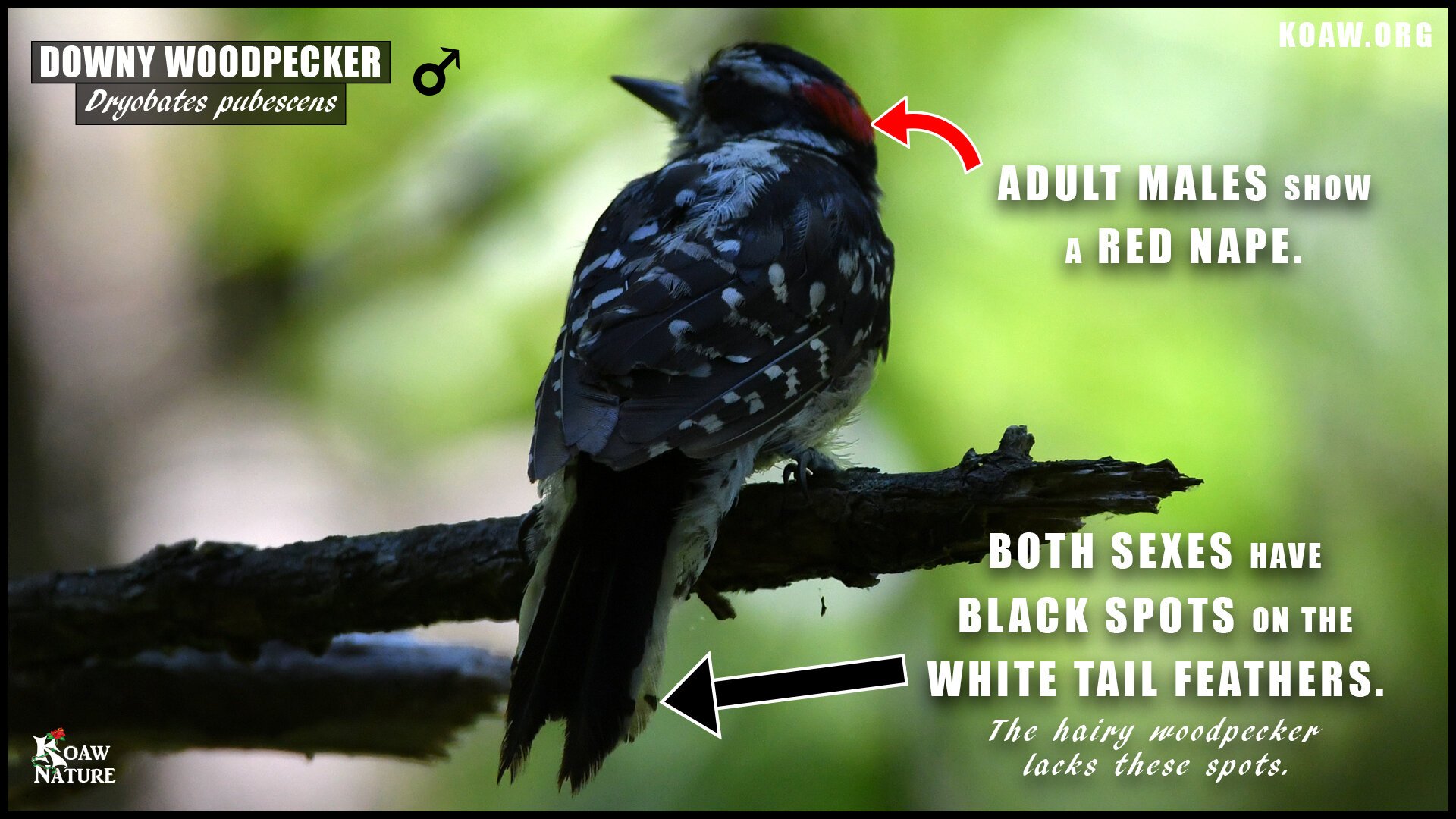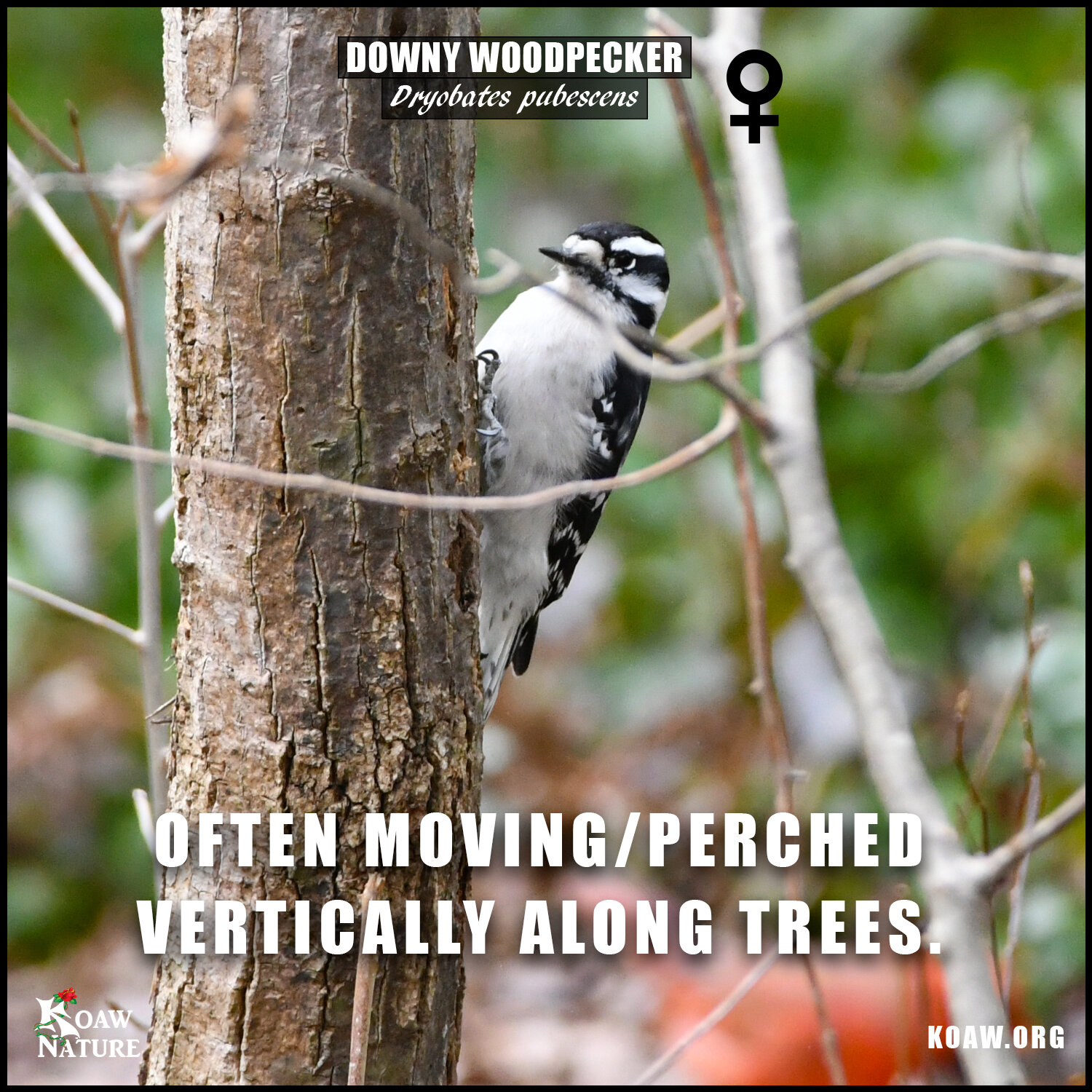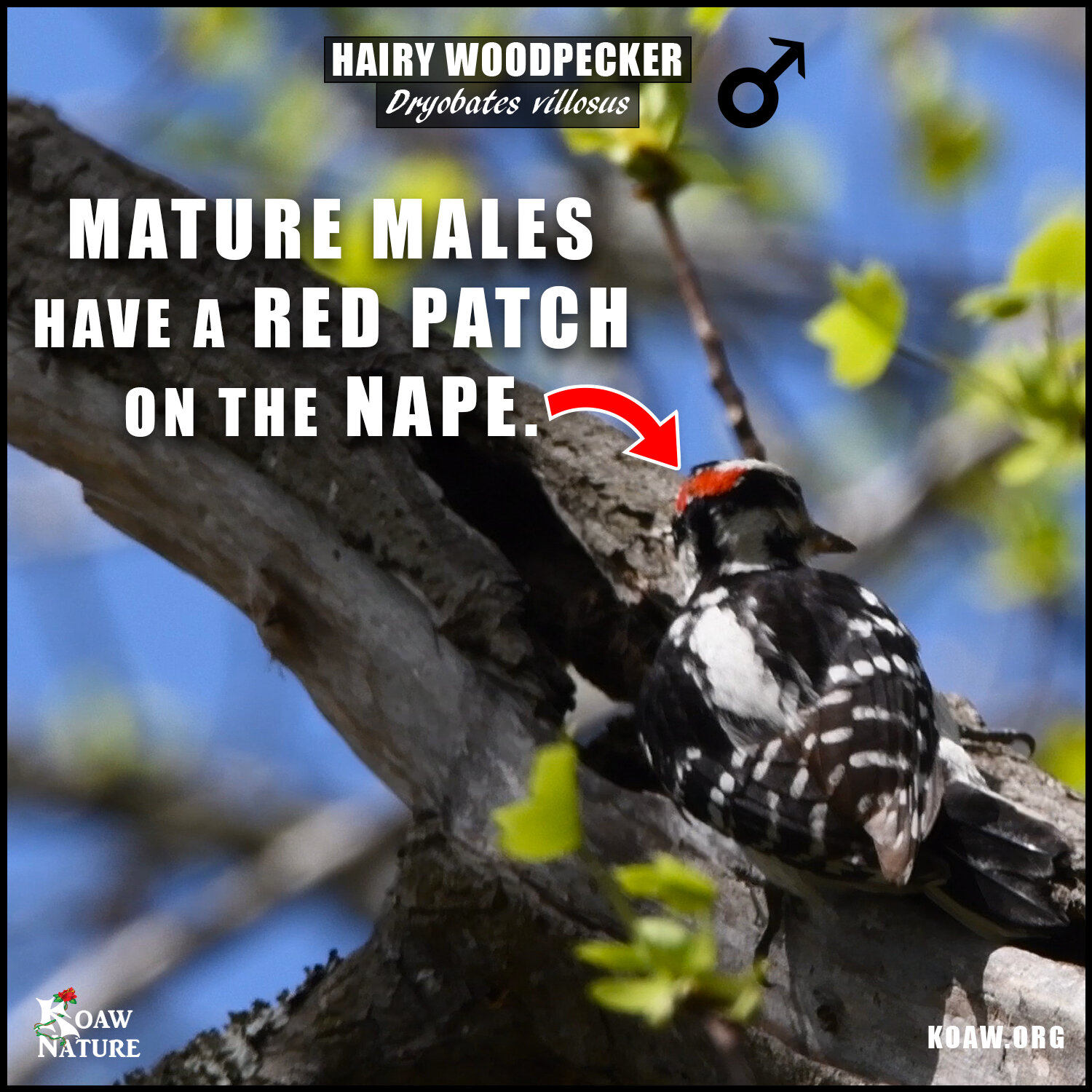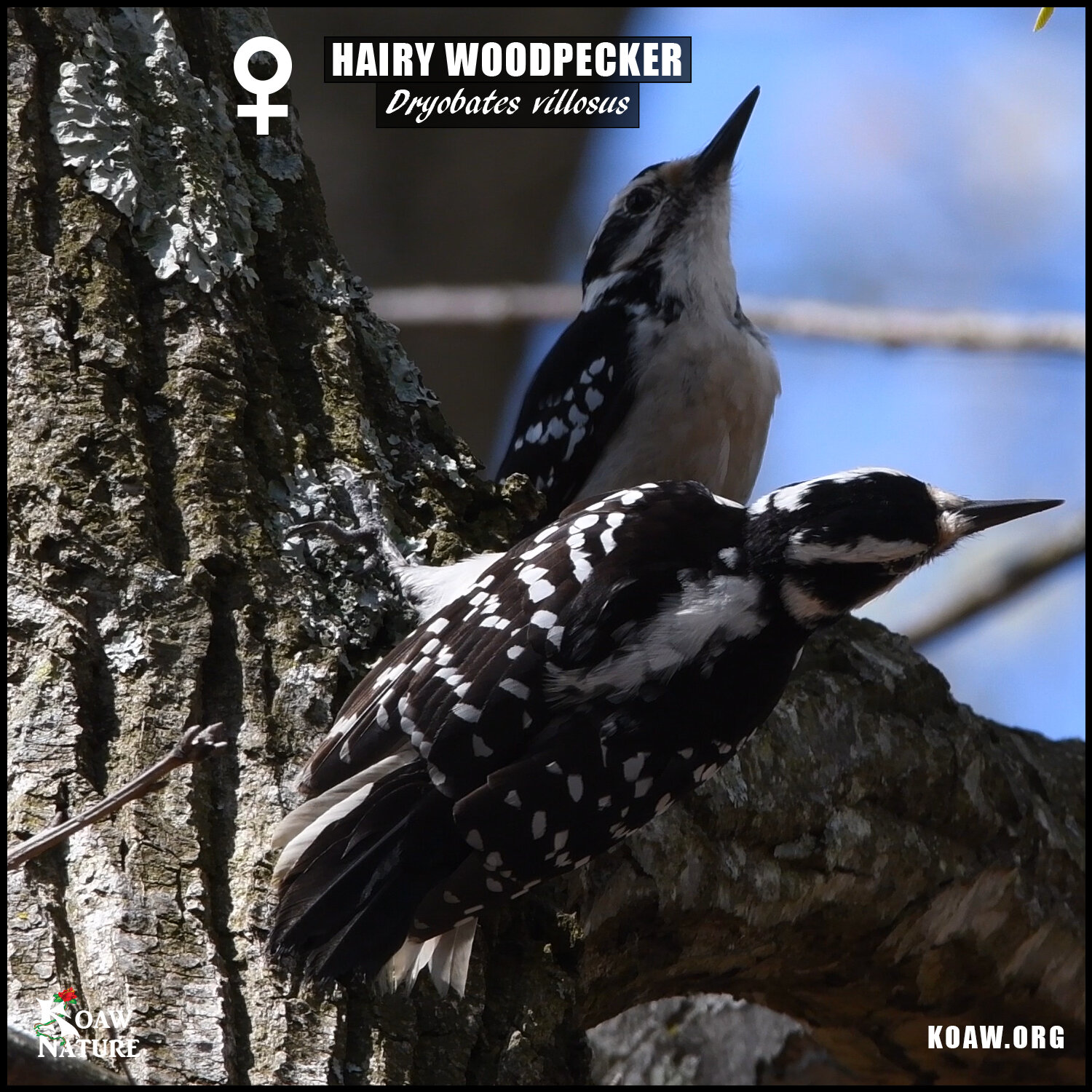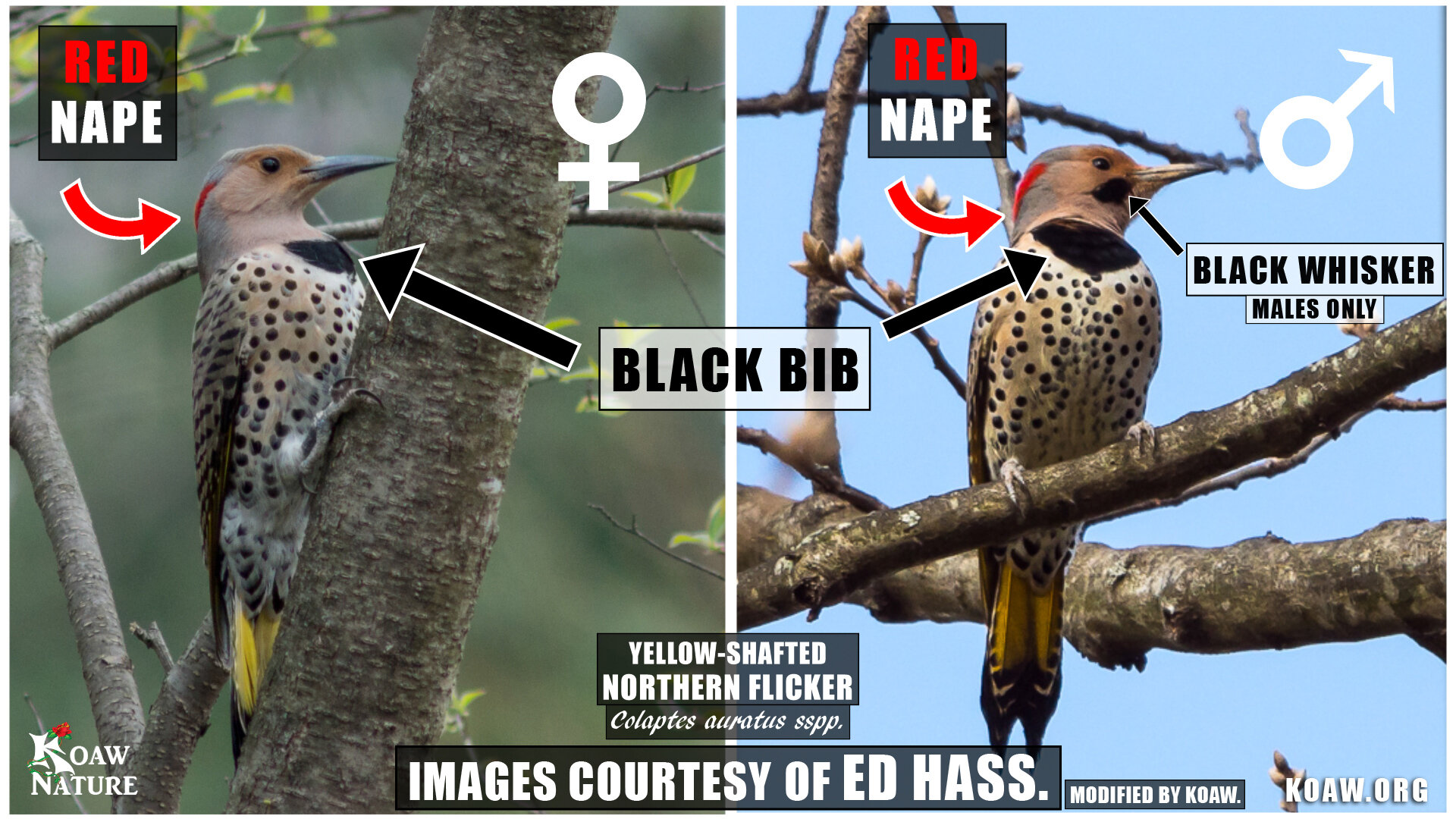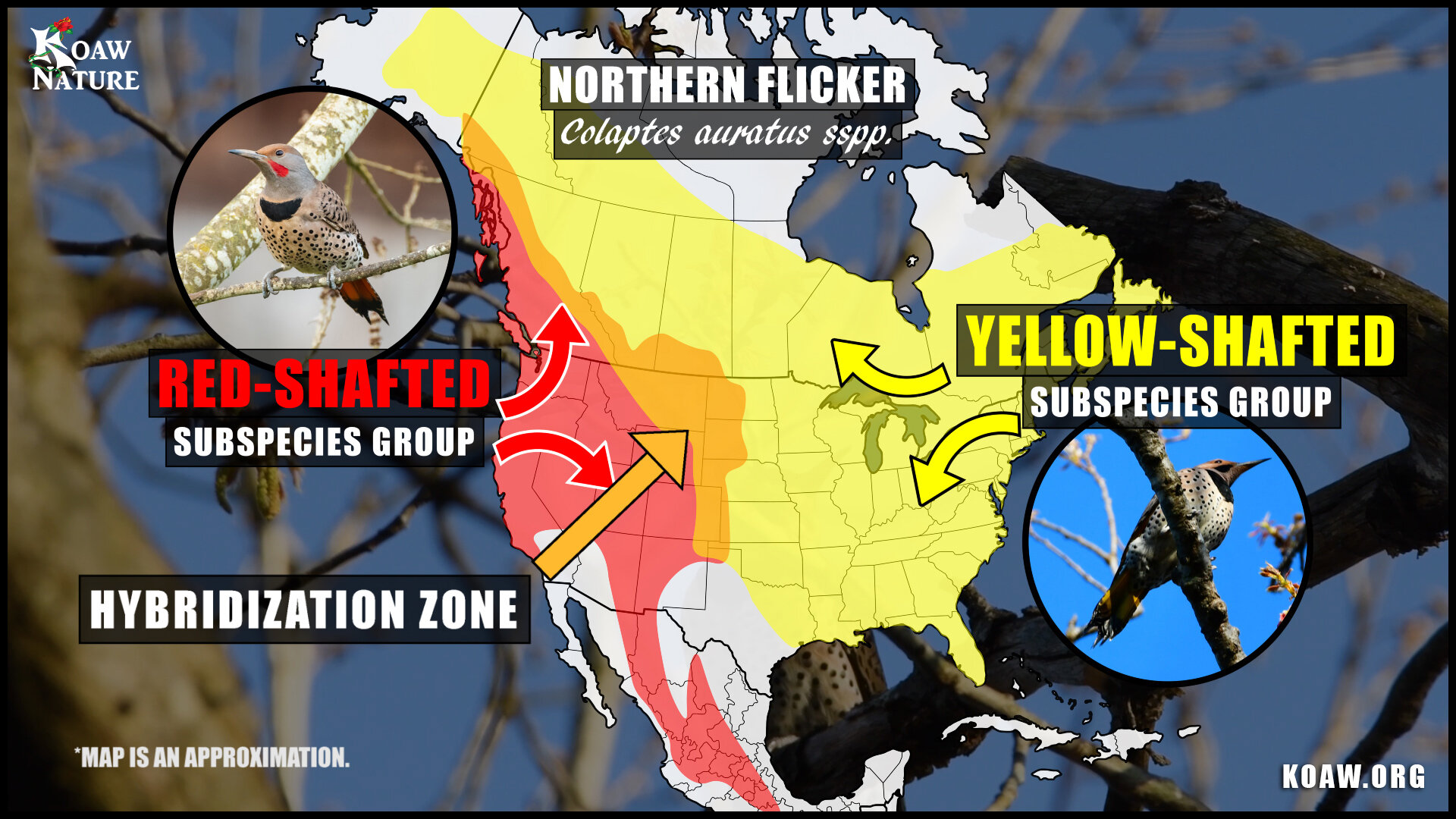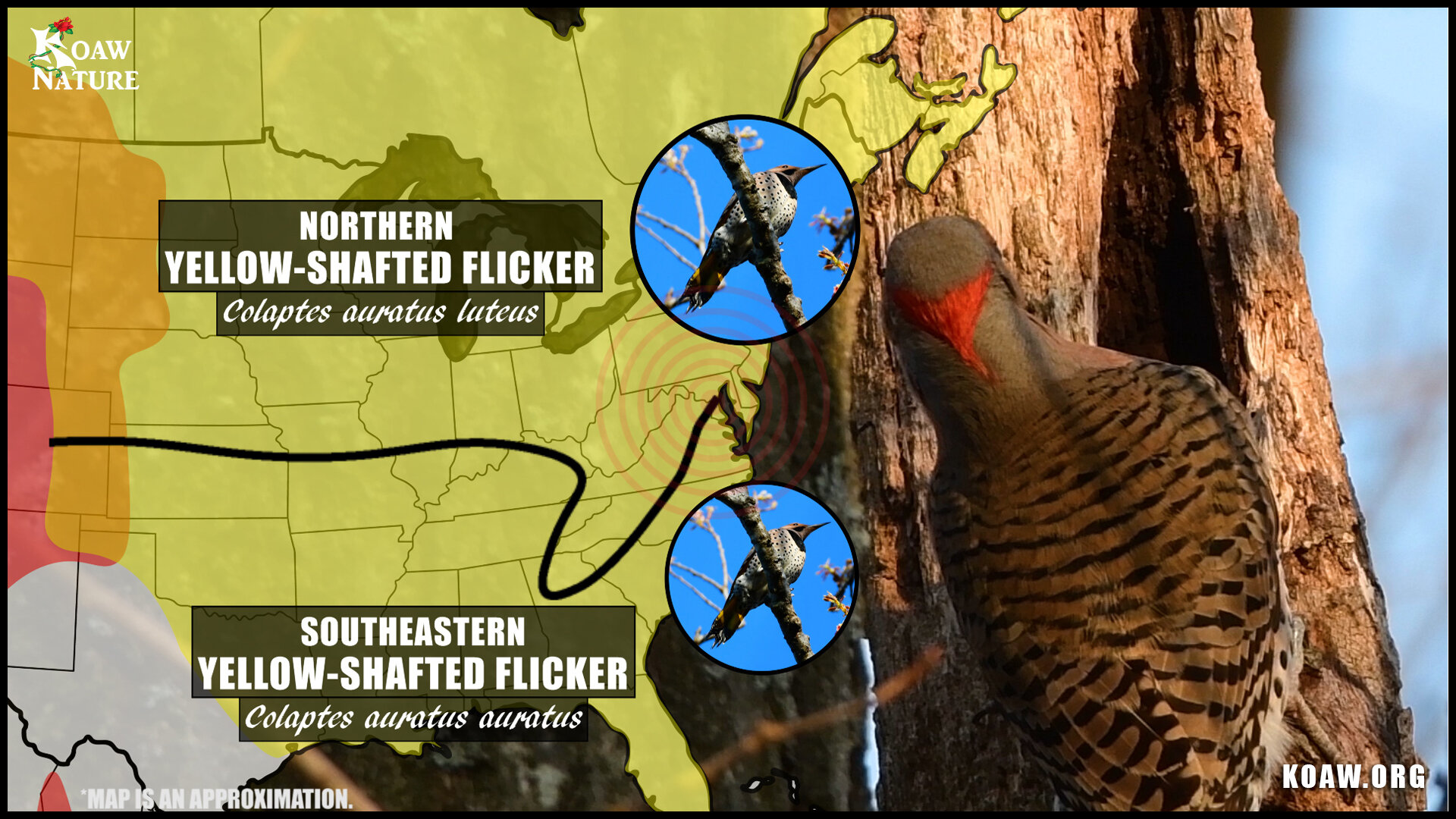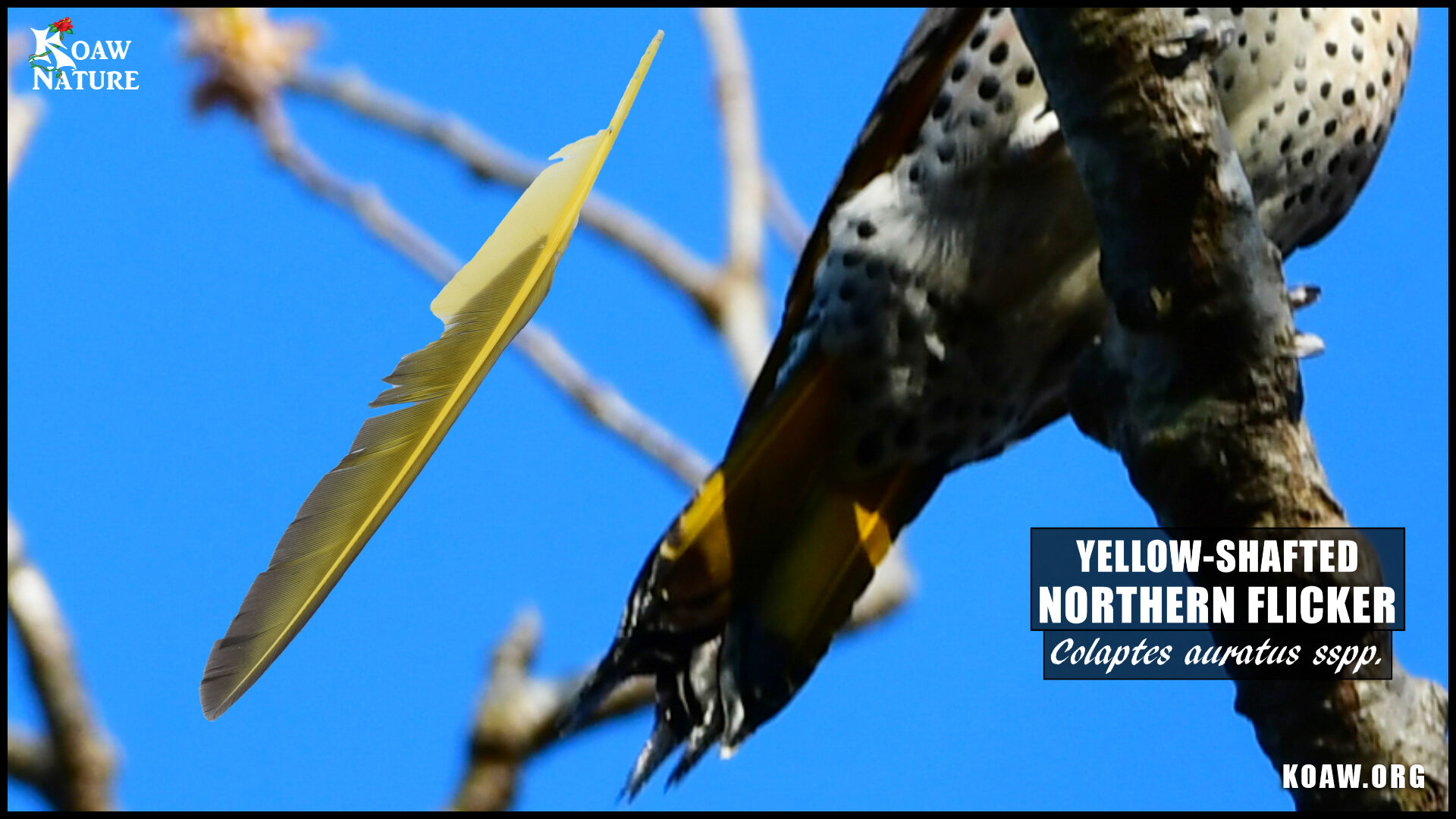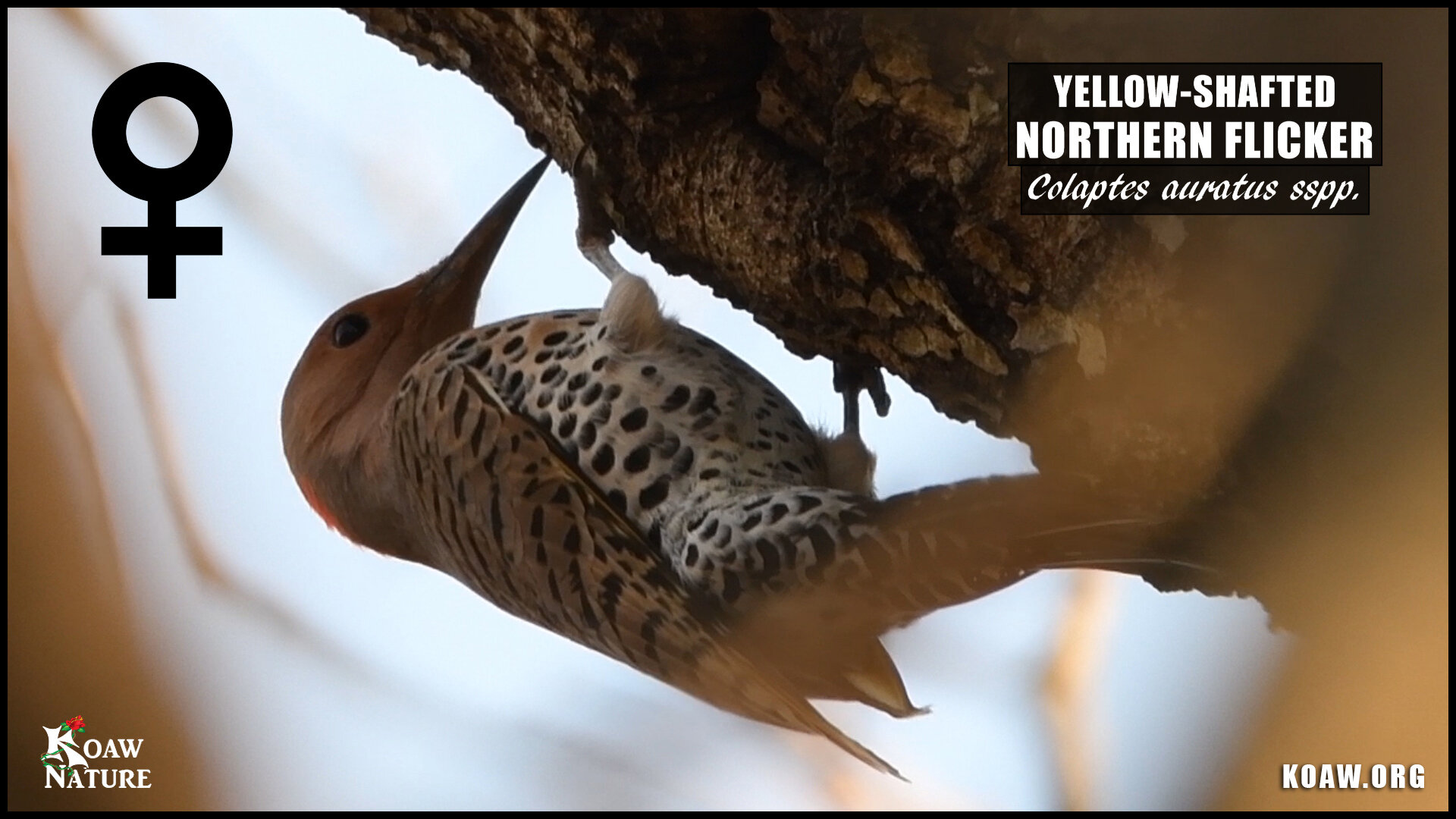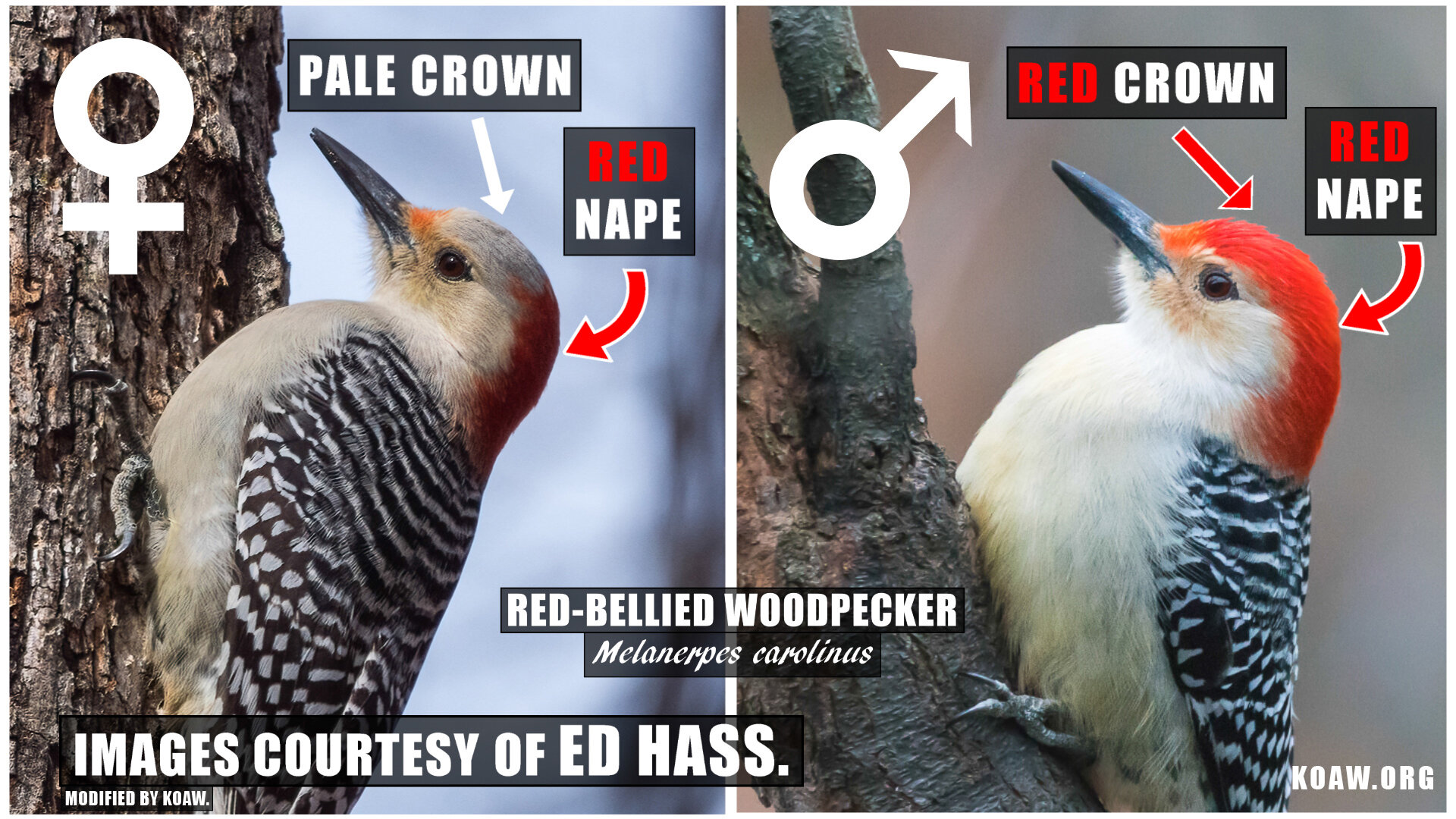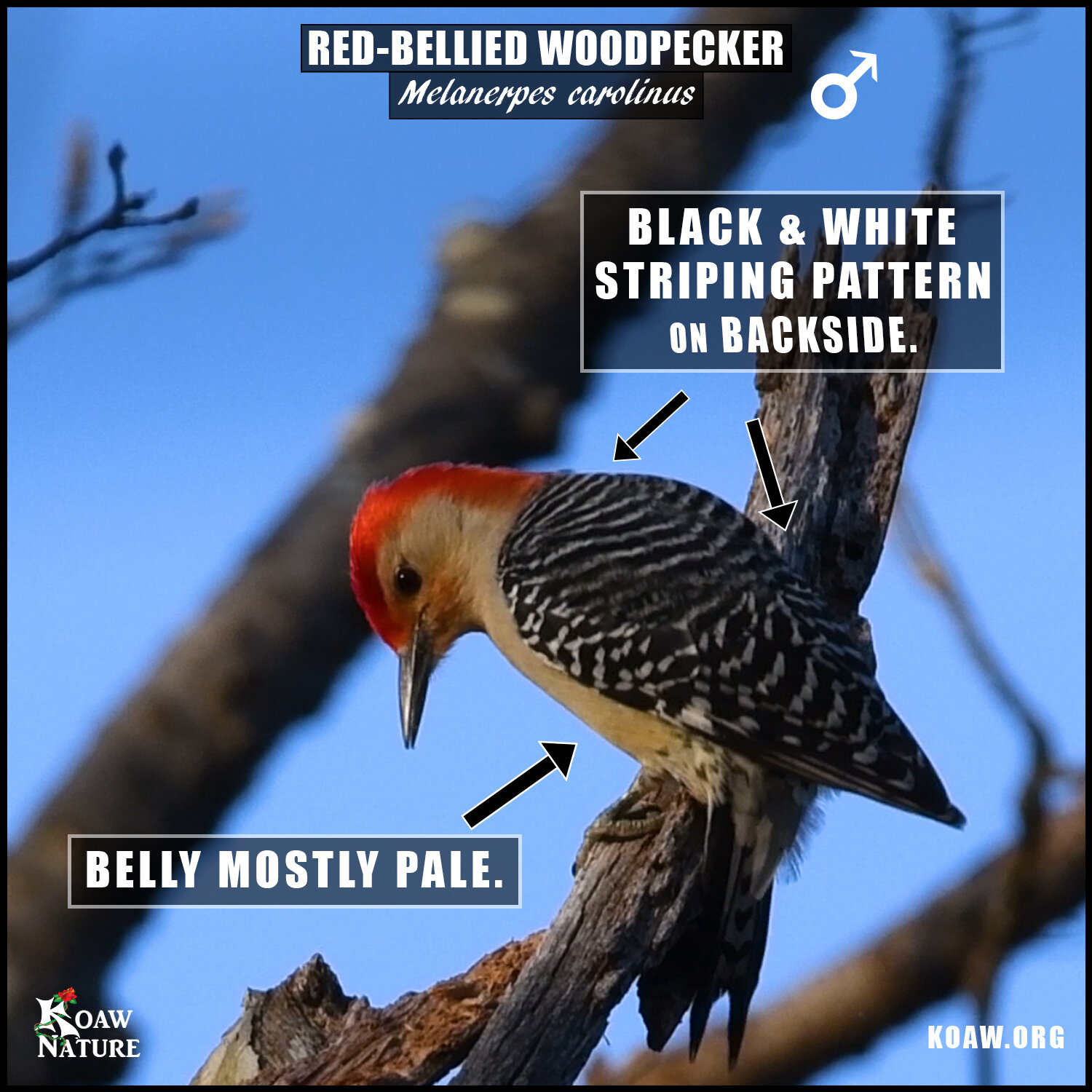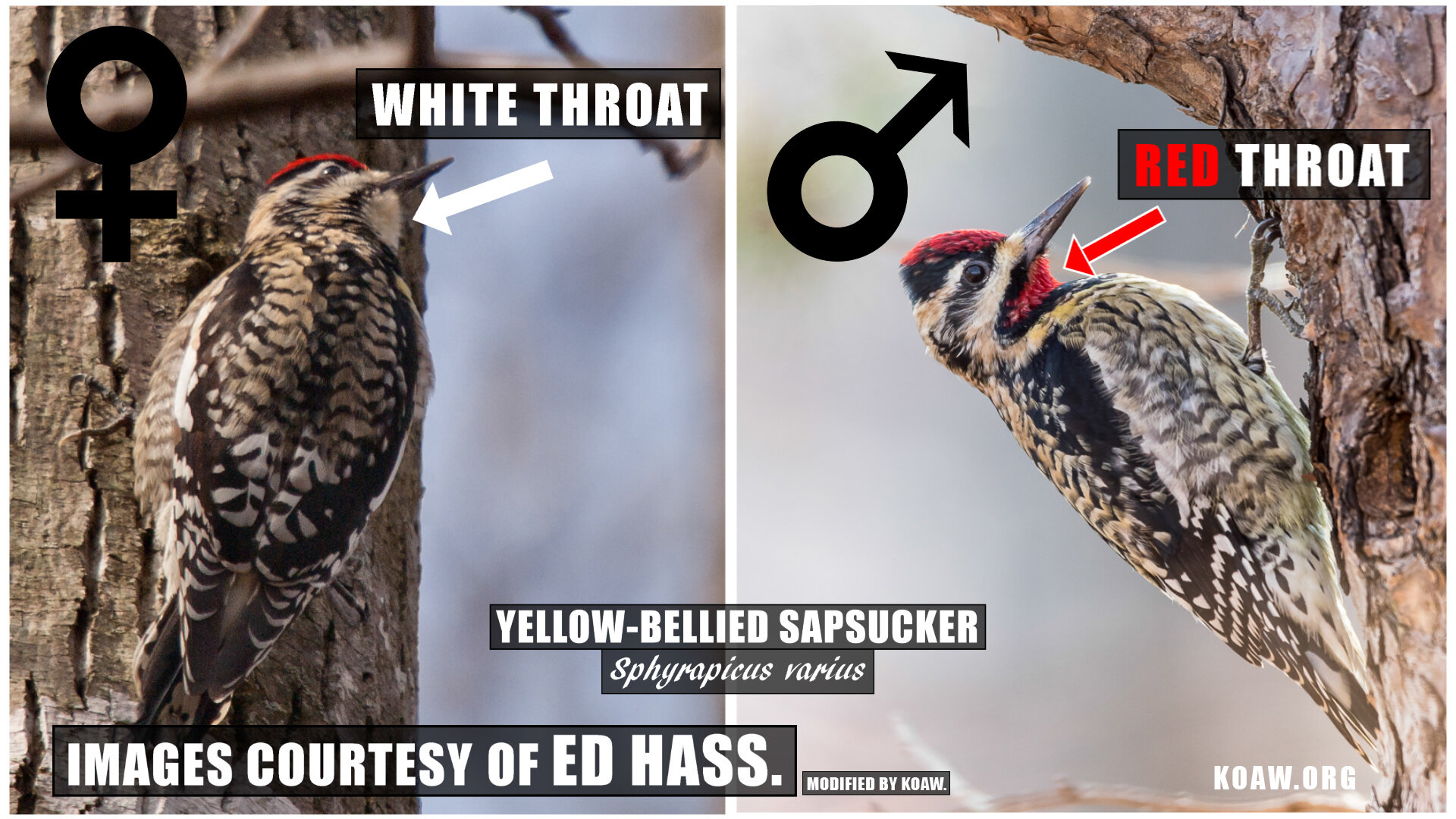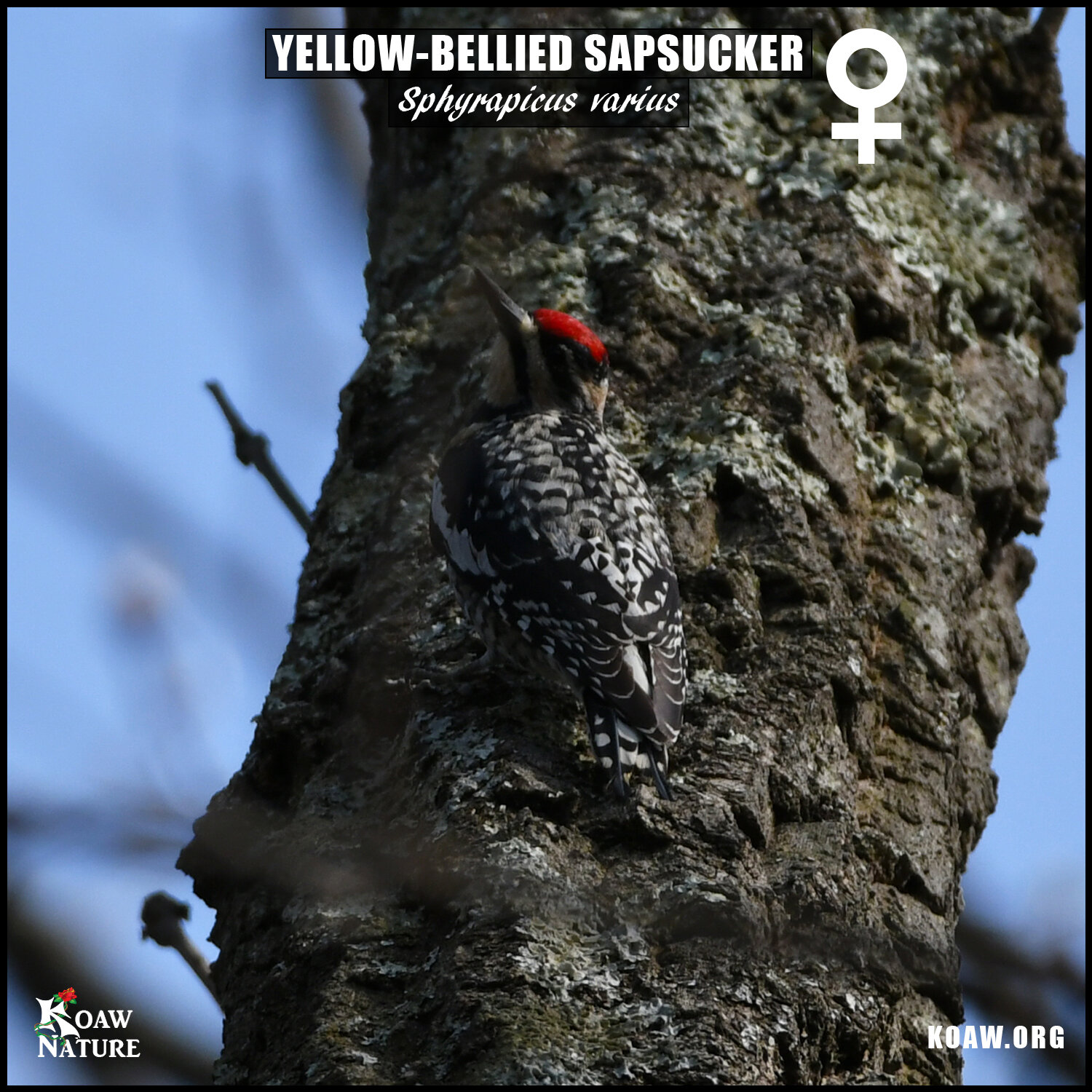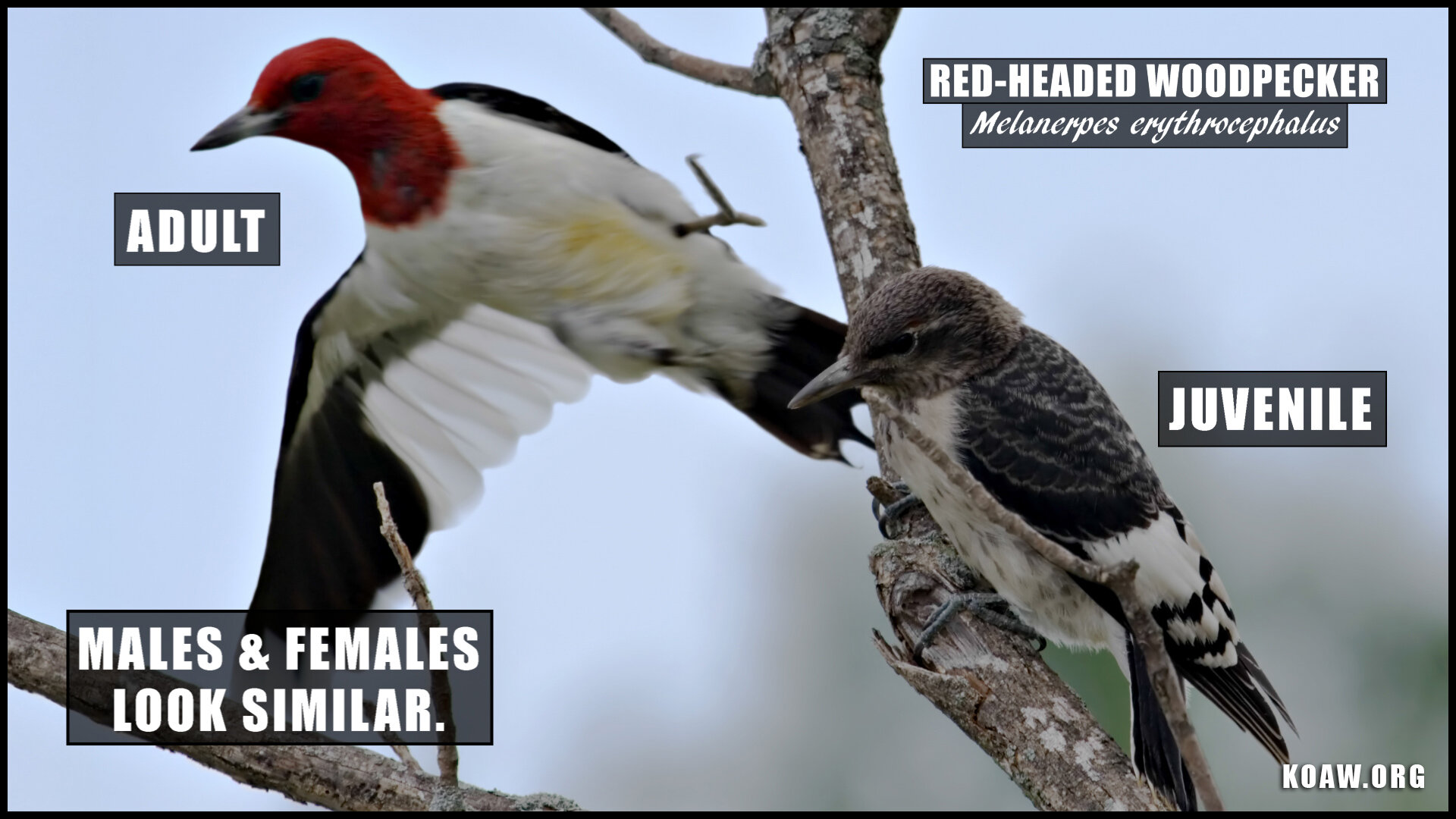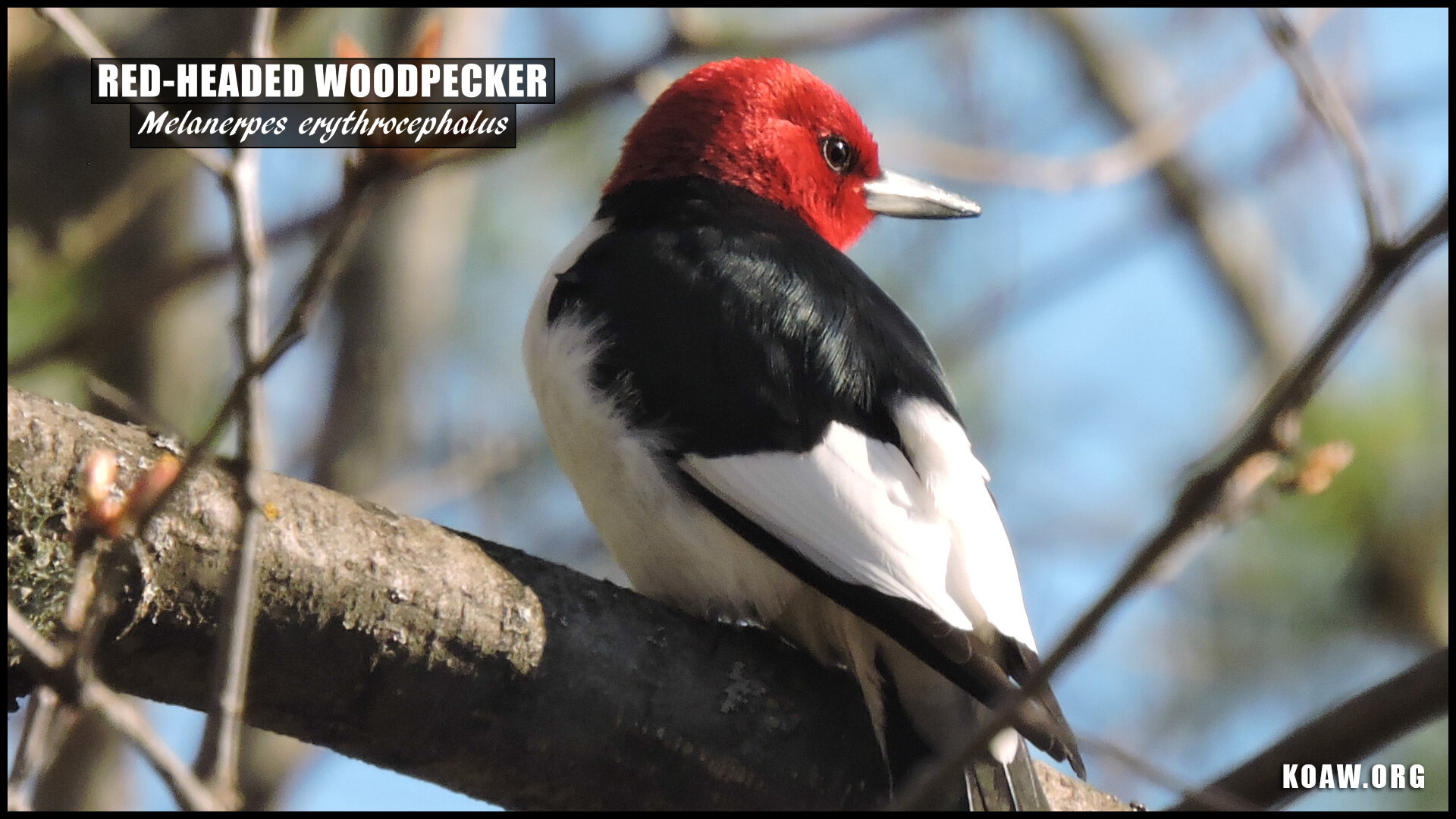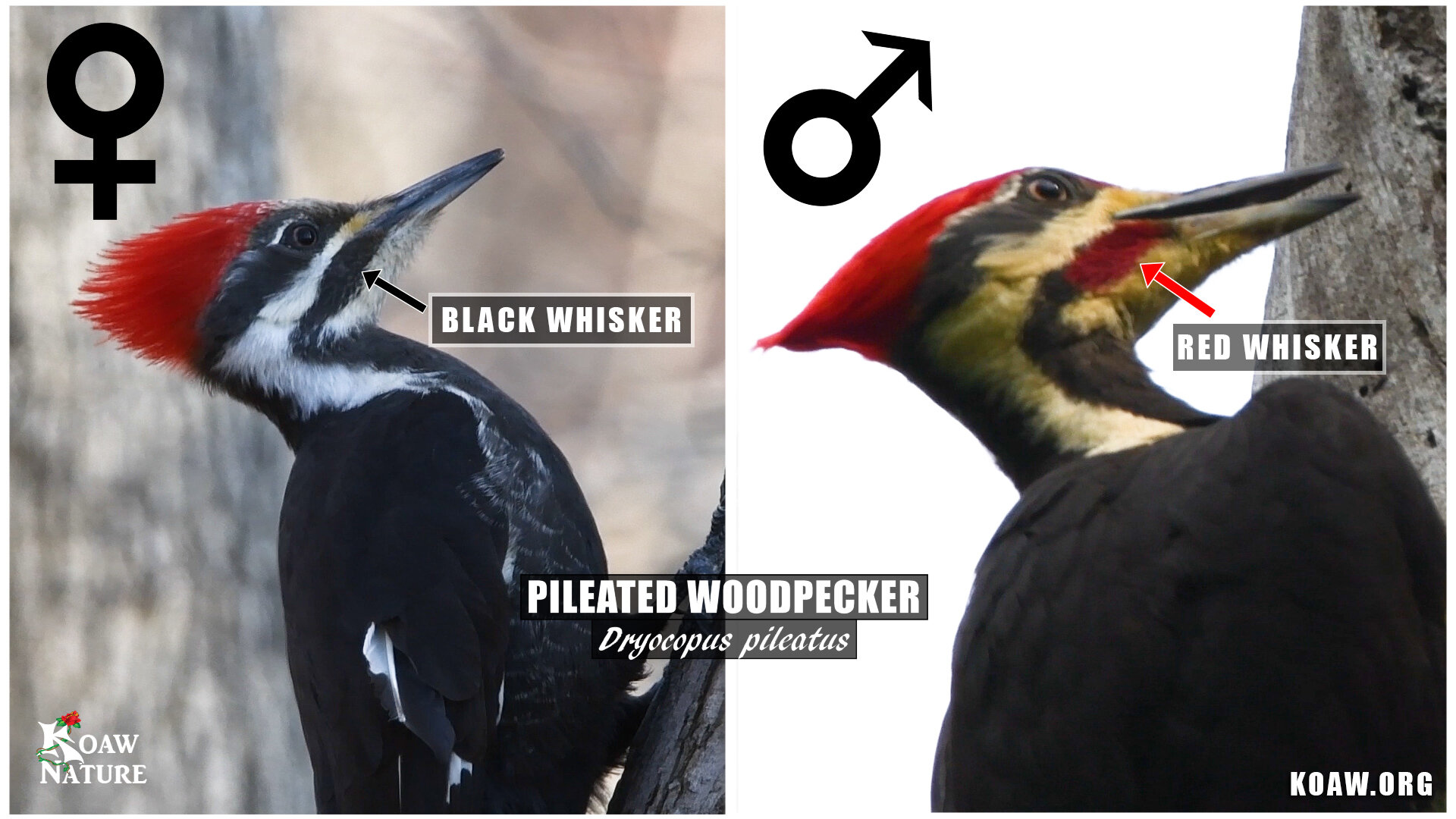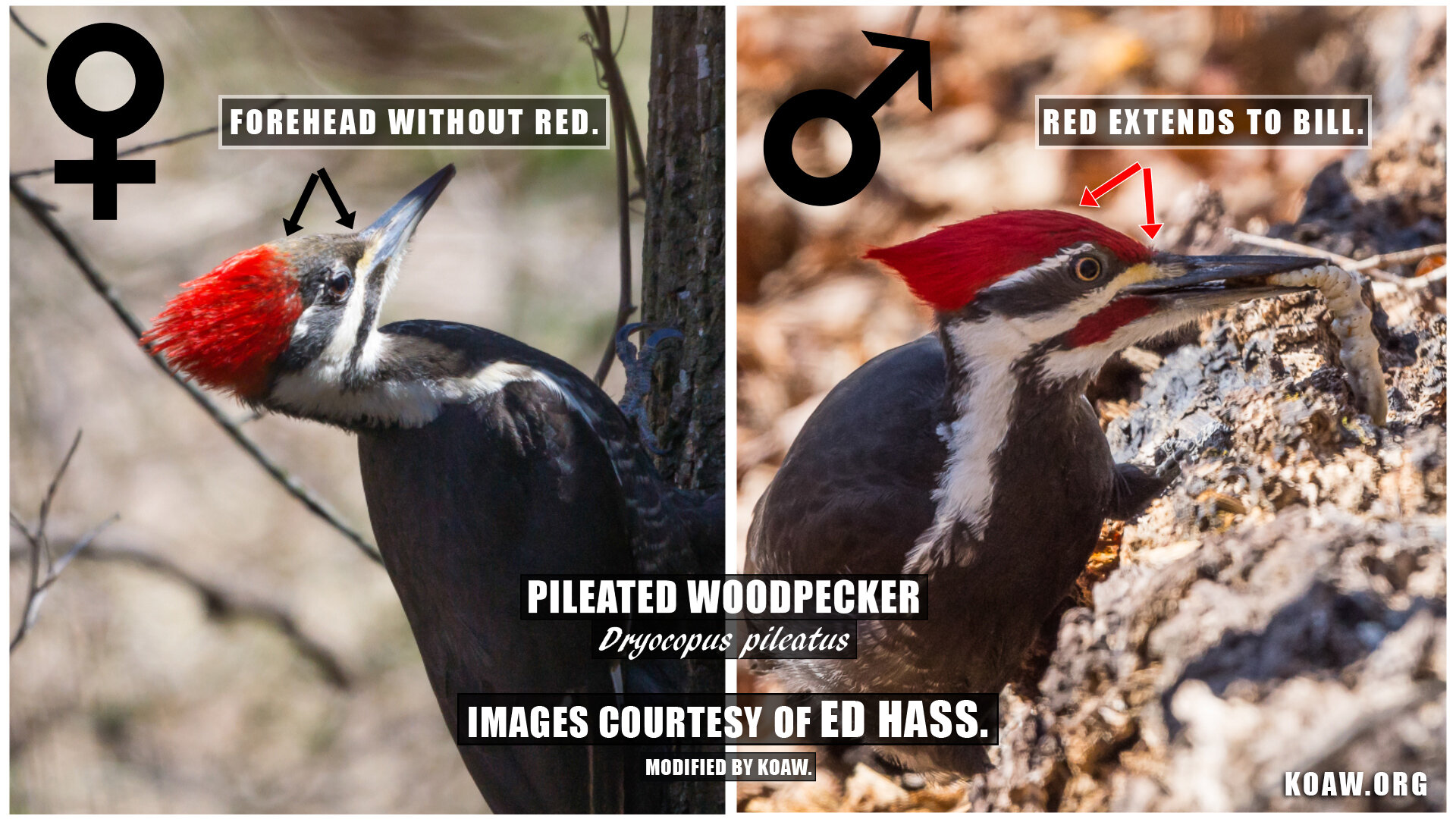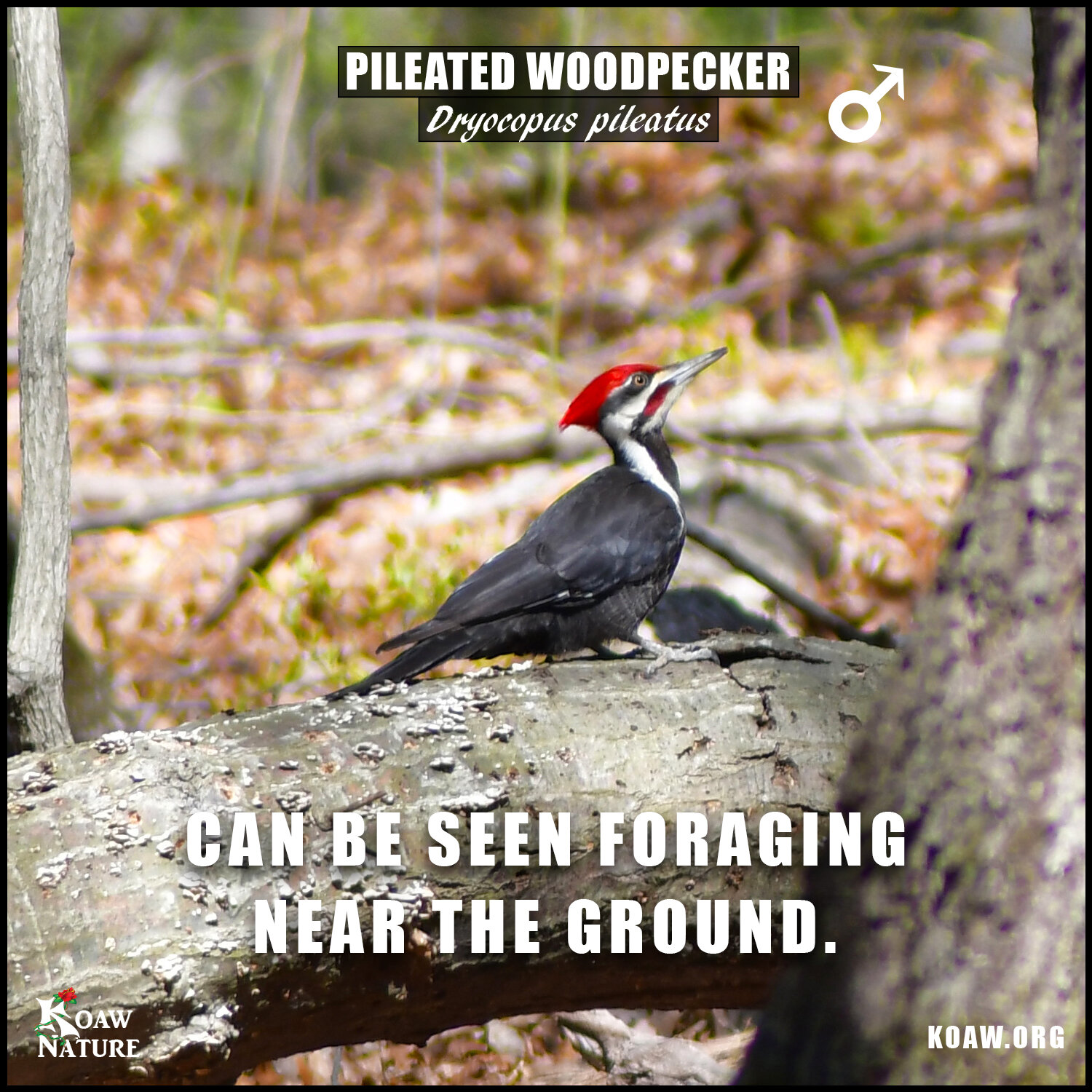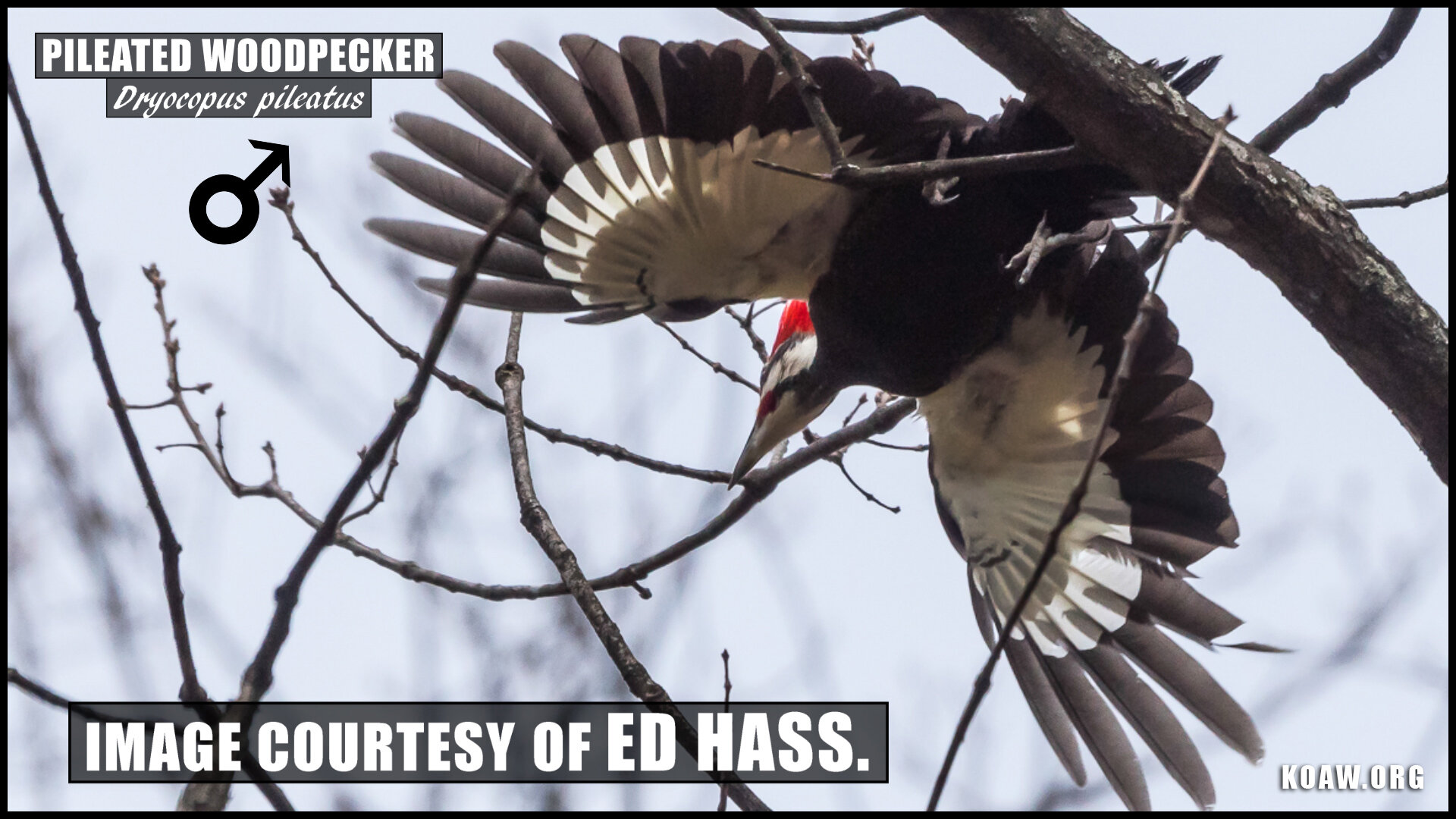By Koaw - 2021
Video version of this guide!
There are seven woodpeckers that we typically see in the DMV, or the D.C., Maryland, and Virginia area. These birds range in size from the very large pileated woodpecker (Dryocopus pileatus), about the size of a crow, to the much smaller downy woodpecker (Dryobates pubescens), a bird that is similar in size to the local eastern chipmunk and house sparrow.
I’ve captured video of each one of our local woodpeckers and created a simple identification-guide-video hosted on the Koaw Nature YouTube. Or if you’re more into pictures and quick notes, feel free to browse below.
Local wildlife photographer Ed Hass generously allowed me to use some of his photos of our local woodpeckers for comparison images. I encourage you to check out his free-to-view wildlife galleries of the local fauna around the DMV.
Ed Hass's Woodpecker Gallery ► https://aehass.zenfolio.com/f361280335
Ed Hass's Wildlife Gallery ► https://aehass.zenfolio.com/f139805163
DOWNY WOODPECKER (Dryobates pubescens)
The downy woodpecker is the smallest and most frequently seen woodpecker in the DMV. This bird is about the size of the local chipmunk. The white breast, black stripes on the head and white spotting on the back of the flight feathers are good features to examine to distinguish this bird from most others in the area. This species is very similar in appearance to the hairy woodpecker (Dryobates villosus), with a few key differences:
The downy woodpecker has black spots on the white tail feathers while the hairy woodpecker lacks these spots.
The downy woodpecker has a much shorter bill relative to the head size compared to the hairy woodpecker.
The downy woodpecker is noticeably smaller than the hairy woodpecker; the downy woodpecker is closer in size to that of a house sparrow.
(See hairy woodpecker vs. downy woodpecker comparison images below.)
Mature males can easily be distinguished from females by noticing the red blotch on the nape, or neck. Females will not show any red.
DOWNY VS. HAIRY
The hairy woodpecker is about the size of 2 eastern chipmunks while the downy woodpecker is noticeably smaller, around the size of 1 eastern chipmunk.
HAIRY WOODPECKER (Dryobates villosus)
The hairy woodpecker, like the downy, also shows a patch of white on the back with the backside of the nearby feathers being black with white markings. The breast is white and the head has black striping.
Distinguishing the hairy from the downy does take a bit of practice. Once you’ve realized your bird-in-question is one of the two then it’s really about asking, “Does that bird look bigger than a house sparrow?” If yes, then it’s probably a hairy. Or if you’re fortunate enough to have a good enough view, when these birds perch they’ll often flail out those white tail feathers, offering a good view to see if there are black spots or not. Remember the hairy woodpecker lacks these black spots on the white tail feathers.
NORTHERN FLICKER (YELLOW-SHAFTED SUBSPECIES GROUP) (Colaptes auratus sspp.)
You’ll often hear a northern flicker before you see one. This species is quite communicative. Whether a northern flicker is drumming (the act of beating its bill repeatedly against a tree) or making loud calls in the canopy, these loud communications echo throughout the woods.
Great features to examine are the tannish backside with black barring, the spotted breast, a red mark on the nape, and a black bib. To tell males from females just note that males will have a dark whisker on the head while females lack this feature. Typically a mature northern flicker seen around the DMV will be slightly bigger than a blue jay.
Out here on the East Coast we only get the yellow-shafted subspecies group. The red-shafted subspecies group is westerly with a zone of introgression/hybridization between them. [1] [2](See maps in carousel below.) The yellow-shafted flickers have yellow flight feathers as well as slightly different colors and patterning body compared to the red-shafted flickers.
Around the DMV we live on a range overlap between two northern flicker subspecies: The northern yellow-shafted flicker (Colaptes auratus luteus) and the southeastern yellow-shafted flicker (Colaptes auratus auratus.) The two subspecies are essentially identical in appearance though the northern yellow-shafted flicker is a bit larger. Since the two subspecies interbred in this range overlap, often confirming a subspecies ID is rather impractical from a casual birding standpoint. [3] We just know with confidence that we have the yellow-shafted subspecies group.
All Ed Hass’ woodpecker images may be found here: https://aehass.zenfolio.com/f361280335
RED-BELLIED WOODPECKER (Melanerpes carolinus)
This is a male near a nest cavity in the tree.
The red-bellied woodpecker is a fairly common sight around the DMV. This species is smaller than the local northern flicker and about the same size as the hairy woodpecker and blue jay. Contrary to its name, this bird doesn’t have too much red coloring on the belly; a small patch of red is usually present on a mostly pale belly.
Key features to look for are the backside black-and-white contrasting stripes and the conspicuous red nape where males have red extending forward to the bill along the crown.
YELLOW-BELLIED SAPSUCKER (Sphyrapicus varius)
I found this beautiful male checking out the sap wells in this tree.
The yellow-bellied sapsucker mostly resembles the downy and hairy woodpeckers. On the backside of the yellow-bellied sapsucker is a messier pattern of black and white. The yellow-bellied sapsucker is distinctly larger than a downy and is more similar in size to a hairy, if not smaller. The crown is red on both sexes of the yellow-bellied sapsucker and the white shoulder-mark is also present on both sexes, of which are good features to use for identification. (Remember that the downy and hairy woodpeckers do not have red crowns; only the nape will be red on males.) Yellow-bellied sapsucker males have a red throat while that throat remains white on the females. And true to its name, yellow exists on the breast and belly either as a pale patch or more defined.
RED-HEADED WOODPECKER (Melanerpes erythrocephalus)
The red-headed woodpecker is not commonly seen in the DMV, especially in the urban and suburban areas. The best features to distinguish this species from the other woodpeckers:
1. Notice that the red coloration on the head covers the entire head.
2. The backside is bicolored with a black top and white bottom.
This species is about the same size as the hairy woodpecker. Males and females look similar.
PILEATED WOODPECKER (Dryocopus pileatus)
The pileated woodpecker is the largest species of woodpecker here in the DMV, about the size of crow. The very prominent red crown and the black back are great distinguishing features to look for besides the large size.
Males have a red whisker while this feature is black on females. Also, the red crest on the male extends all the way to the bill while the female’s red crest does not extend as far, leaving a grayish forehead. This species drums very loudly and is fairly chatty just like the northern flicker and red-bellied woodpecker.
All Ed Hass’ woodpecker images may be found here: https://aehass.zenfolio.com/f361280335
REFERENCES:
K. L. Wiebe and W. S. Moore, "Northern Flicker (Colaptes auratus)," in The Birds of North America, Ithaca, NY, Cornell Lab of Ornithology, 2017.
S. M. Aguillon, L. Campagna, R. G. Harrison and I. J. Lovette, "A flicker of hope: Genomic data distinguish Northern Flicker taxa despite low levels of divergence," The Auk Ornithological Advances, vol. 135, pp. 748-766, 2018.
L. L. ,. J. Short, "Hybridization in the Flickers (Colaptes) of North America," Bulletin of the American Museum of Natural History, vol. 129, no. 4, 1965.
SEE ALSO: Cornell Lab of Ornithology’s All About Birds Web ID Reference: https://www.allaboutbirds.org/
